CubeSpace: Revolutionizing satellite control for the smallsat market
In a rapidly evolving space industry defined by mounting competition and compressed timelines, CubeSpace (CS) is transforming satellite control for smallsats.
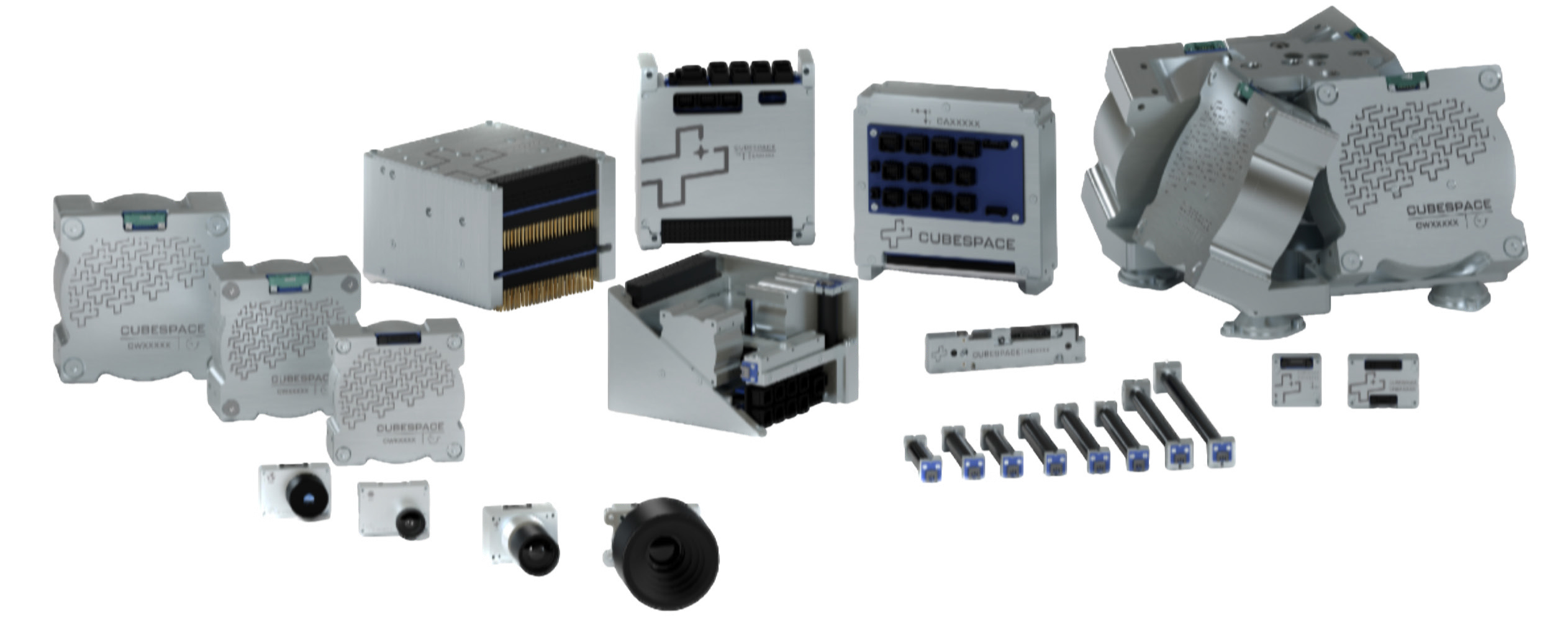
With a fully modular, Lego-like architecture, in which components can easily be swapped out and interface boards changed, fully mission-tailored, plug-and-play solutions can now be delivered in weeks rather than months. This provides customers with a faster, more reliable alternative to the time-intensive and complex process of in-house designed and integrated ADCS systems.
With more than 350 ADCS systems and thousands of related components already operating reliably in orbit, CS is establishing a new gold standard for reliable, scalable, and easy-to-integrate control solutions. This novel approach reduces supply chain complexity, accelerates time-to-orbit, and supports the streamlined production essential for multi-satellite and mega-constellation programs seeking quality, consistency, and rapid deployment.
The market response so far confirms the demand, with 28 ADCS systems already sold in the 50 to 500 kg class, several of which are scheduled for flight in 2025.
As it moves into the smallsat market, funding from investors has empowered CS to scale its capabilities dramatically. High-performance reaction wheels, now suitable for satellites up to one ton, meet the demands of even the most precise Earth Observation (EO) missions.
Meanwhile, an expanded, automotive-inspired, manufacturing infrastructure has tripled output in the last six months and will continue to grow through automation and industrialization. Maintaining partial and pre-built stock, CS ensures ready-to-ship inventory and swift lead times that align perfectly with today’s ambitious development schedules.
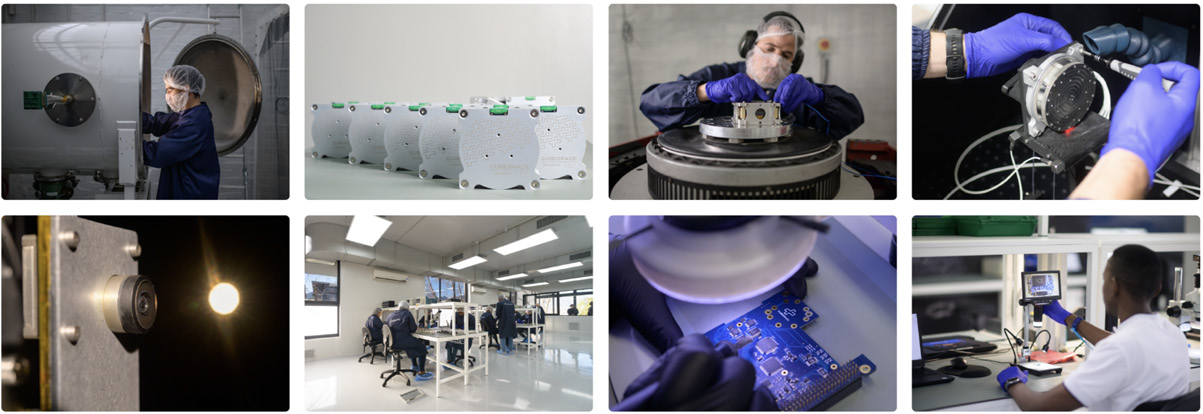 Beyond hardware, CS stands apart with its integrated software ecosystem—encompassing mission analysis, simulation, integration, and commissioning support—all soon to be accessible through a cloud-hosted customer portal. This holistic model offers unparalleled usability and cements CS’ position as a long-term partner rather than a traditional hardware supplier.
Beyond hardware, CS stands apart with its integrated software ecosystem—encompassing mission analysis, simulation, integration, and commissioning support—all soon to be accessible through a cloud-hosted customer portal. This holistic model offers unparalleled usability and cements CS’ position as a long-term partner rather than a traditional hardware supplier.
“CubeSpace is a globally recognized leader in ADCS technology and is poised to capture an even larger share of the evolving satellite market,” said CEO, Mike-Alec Kearney. “At CS, we don’t just provide hardware; we support customers through the entire mission lifecycle, from initial design to post-launch operations. While our rapid delivery and competitive pricing may draw many of them in, it’s our robust technology and customer-centric approach that keeps them coming back.”
 As the space industry continues to expand, CubeSpace’s comprehensive, integrated solutions ensure that satellite developers worldwide can meet their evolving mission requirements swiftly, reliably, and affordably.
As the space industry continues to expand, CubeSpace’s comprehensive, integrated solutions ensure that satellite developers worldwide can meet their evolving mission requirements swiftly, reliably, and affordably.
About CubeSpace
CubeSpace is a globally recognized leader in Attitude Determination and Control Systems (ADCS), supporting over 250 customers in more than 30 countries. Leading in ADCS innovation and cutting-edge solutions, CS is a trusted supplier to major space agencies like NASA and ESA, as well as a majority of constellation primes and ambitious commercial satellite builders. Supporting customers from design through to commissioning, CS is setting a new gold standard for control systems globally.
PASCO to provide data for Japan’s newest radar satellite
PASCO has been selected by the Japan Aerospace Exploration Agency (JAXA) to spearhead data services for the Advanced Land Observing Satellite ‘Daichi 4’ (ALOS-4).
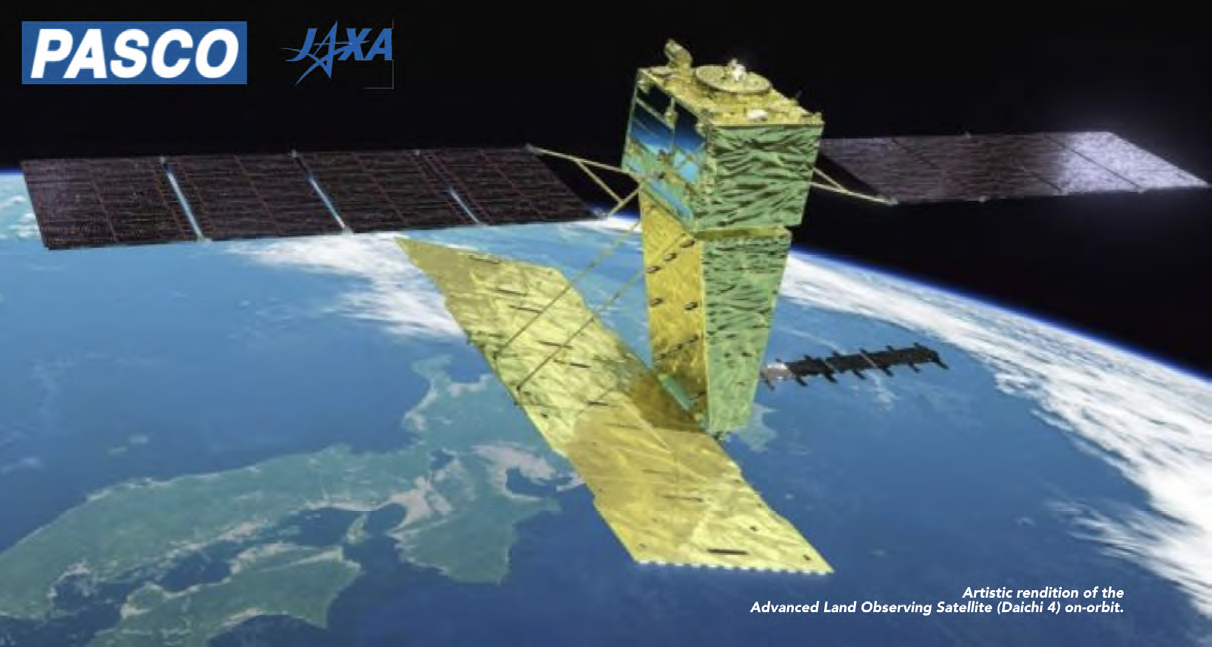
As the exclusive provider of satellite imagery for both ALOS-2 and ALOS-4, PASCO will deliver high-end geospatial data via a dedicated platform. This partnership highlights PASCO’s prominent role in advancing satellite-based Earth Observation (EO) and ensuring seamless access to high-resolution imagery for various applications.
Launched in July of 2024, ALOS-4 is a synthetic aperture radar (SAR) satellite that features phased array type L-band radar (PALSAR-3). This advanced radar technology is developed by JAXA and Mitsubishi Electric and offers enhanced observation performance compared to its predecessor. With a spatial resolution of 3 meters and an expanded observation swath of 200 km, ALOS-4 is tailored for precise monitoring of crustal deformation, subsidence, disasters, forests and marine environments.
Unlike optical sensors, PALSAR-3 radar operates independently of sunlight, acquiring images day and night. Its radio waves can penetrate clouds, ensuring consistent observations regardless of weather conditions. These capabilities enable ALOS-4 to monitor disaster-hit areas, sea ice and infrastructure displacement while supporting broader applications such as forest conservation.

Additionally, similar to its predecessor ALOS-2, ALOS-4 integrates an automatic identification system (AIS) for ships. Equipped with the advanced SPAISE3 system developed in collaboration with NEC Corporation, the satellite enhances vessel detection in high-traffic marine areas by leveraging multiple antennas and robust ground-based data processing. This innovation ensures improved monitoring of ocean activity, aiding in maritime safety and environmental protection.
PASCO, active in EO since 2005, is committed to addressing societal challenges through the company’s expertise in satellite data processing and geospatial solutions. In partnership with the Remote Sensing Technology Center of Japan (RESTEC) and Tellus, PASCO aims to promote widespread use of ALOS-4 data.
SIIS signs MoU with Pixxel
SIIS Co., Ltd. has signed a memorandum of understanding (MoU) with Pixxel, a U.S.-India-based space technology company that is building a hyperspectral satellite constellation that will supply hyperspectral satellite data for Korea.
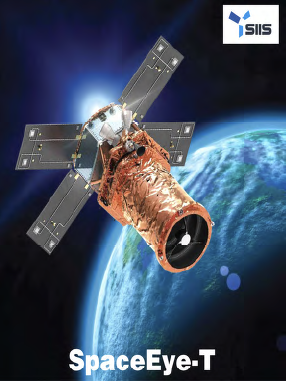 Pixxel’s hyperspectral data offers far greater spectral detail than traditional multispectral data, enabling precise analysis of the physical and chemical properties of the Earth’s surface and atmosphere.
Pixxel’s hyperspectral data offers far greater spectral detail than traditional multispectral data, enabling precise analysis of the physical and chemical properties of the Earth’s surface and atmosphere.
SIIS plans to strengthen its Earth Observation (EO) business with the launch of its ultra-high-resolution satellite, SpaceEye-T, in March of 2025. Developed with domestic private technology and investment, SpaceEye-T will be Korea’s first private EO satellite capable of delivering 30 cm-class, ultra-high-resolution, spatial information. With this, SIIS aims to compete with global leaders in the geospatial industry.
Through this partnership with Pixxel, SIIS intends to enhance its market competitiveness by combining precise spatial information obtained from ultra-high-resolution imagery with the material-specific properties of hyperspectral data.
The company expects this integration will enable users to leverage the unique characteristics and strengths of different data types, meeting diverse analytical demands and expanding the applications of satellite data.
Pixxel is gearing up to launch its Fireflies constellation, consisting of six commercial-grade hyperspectral satellites in early 2025. Designed to deliver 5 meter resolution, a 40 kilometer swath, and daily revisit capabilities across hundreds of bands, this constellation will provide unparalleled global coverage and enable industries to access high-fidelity hyperspectral data for a wide range of applications, including agriculture, climate monitoring, and resource management.
SIIS CEO Kim Moon-Gyu said, “Through this collaboration with Pixxel, we will expand our offerings beyond optical and radar imagery to include hyperspectral data. We are committed to broadening the scope of satellite data applications and providing valuable insights to the Earth observation solutions market.”
Awais Ahmed, Founder and CEO of Pixxel, said, “This partnership with SIIS marks an exciting opportunity for us. Together, we aim to provide transformative insights that enable end-users across industries to tackle complex challenges. This collaboration reinforces our commitment to building a health monitor for the planet and advancing Earth observation solutions globally.”
Pixxel’s Chief Commercial Officer, Aakash Parekh, said, “We are thrilled to partner with SIIS and could not think of a better way to enter the Korean market with our groundbreaking 5 meter hyperspectral dataset. SIIS has built a high-calibre team with deep expertise, ideally suited to educate end-users across agriculture, energy, environment, and defence on the transformative benefits of hyperspectral technology.”
SpaceFund’s 2025 Space Industry Expectations
SpaceFund expects to make many exciting announcements during 2025 as the company builds on the continuing success of the firm’s existing portfolio of 21 space startup investments.

How We See The Universe
The space industry is gaining more momentum now than at any time in human history. Due to technological improvements, increased government space budgets, and a changing regulatory environment, we expect this trend to accelerate in 2025.
Based on our market intelligence and deep network of space company executives, members of the U.S. Department of Defense (DoD) and civil space agency contacts, we’ve collated some of our predictions for this coming solar orbit. While no one can predict the future, we do expect great things this year.
What to Watch in 2025
• Orbital flights of Starship, with a potential on-orbit fuel transfer demonstration between two Starship vehicles.
• Launch of Blue Origin’s New Glenn (no earlier than January 6).
• More than 20 entities are targeting a maiden launch of a new vehicle in 2025.
•American political changes will have wide-ranging, positive impacts on government, civil, and commercial space programs.
Commercial space activity is now truly global and we expect more countries to join the industry in 2025 with everything from new national and state-level space programs to new startup space companies.
Favorable economic winds suggest more space company exits in 2025, which will fuel additional investment in the space startup sector.
The space industry continues to mature as more middle-market companies see record growth and prepare for exits.
SpaceX
It’s going to be a fun year for SpaceX. We expect Starship to fly frequently and, potentially, even carry some customer payloads to orbit before the end of the year.
We may see 20 or more launches of Starship before 2025 closes. Falcon launches will continue to increase in cadence, due to demand for Starlink as well as government and commercial customers. SpaceX also expects to perform an in-space propellant transfer demonstration using two docked Starships in 2025—a critical milestone that will allow SpaceX to refuel their Starship HLS vehicle for an uncrewed lunar landing demonstration in the following year.
Launch
Beyond SpaceX, 2025 will see more launches and new launch vehicles attempting to reach orbit than any year in human history.
Blue Origin’s New Glenn rocket’s first test launch is expected imminently. In 2025, we expect at least a few more test launches of the heavy-lift vehicle.
Arianespace’s Ariane 6 may have as many as five launches in 2025.
Avio’s Vega-C rocket may fly as many as four times in 2025.
There are more than 20 entities that are targeting 2025 for maiden flights of their new launch vehicles and there is no way to know if any of them will be successful. For the record, no maiden flight of a new rocket has ever made it to orbit—so don’t hold your breath.
Summary by country: China (7), USA (4), UK (3), Germany (2), with Europe, Ukraine, Russia, Australia, and India each at one.
Blue Origin – New Glenn – USA
Cyclone-4M – Yuzhnoye – Ukraine
Gravity-2 – Orienspace – China
Hera-II – Astraius – UK
Hyperbola-3 – i-Space – China
Irtysh – TsSKB Progress – Russia
Kinetica 2 – CAS Space – China
Maia – MaiaSpace – Europe
Neutron – Rocket Lab – USA
Nova – Stoke Space – USA
Prime – Orbex – UK
RFA One – Rocket Factory Augsburg – Germany
Skyrora XL – Skyrora – UK
SL1 – HyImpulse – Germany
Zhuque-3 – LandSpace – China
Daytona I – Phantom Space Corporation – USA
Tianlong-3 – Space Pioneer – China
Pallas-1 – Galactic Energy – ChinaLong March 8A – China
Eris Block 1 – Gilmour Space Technologies – Australia
Skyroot – Vikram-1 – India
It’s important to note that, while the launch industry is ‘sexy’ and garners a lot of eyeballs in the media, it represents less than 10% of the global space market.
SpaceFund is currently tracking 183 launch companies in various stages of development. SpaceFund’s investment thesis continues to focus on what’s being launched, with a focus on space infrastructure, including everything from satellite components to space stations.
Windracers unveils ULTRA MK2 cargo drone
Windracers has unveiled the firm’s next generation of self-flying cargo aircraft—Windracers ULTRA MK2—with double the power output of its predecessor, the Windracers cargo drone brings a 50% increase in useful payload as well as a significant reduction in fuel costs, while strengthening its position as the low-cost cargo drone of choice for middle mile logistics.
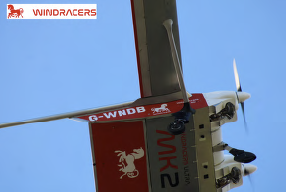
The Windracers ULTRA aircraft, originally conceived to bring down the cost of delivering humanitarian aid to remote communities, is designed and manufactured in the UK and is the most accomplished, low-cost, heavy lift, long-distance cargo drone available today, according to the company. Windracers ULTRA is operational today in Ukraine, the United Kingdom and the United States, enabling organizations to transport meaningful payloads to hard-to-reach places quickly, safely and cost-effectively.
Windracers ULTRA MK2 can take-off, fly and land safely without the need for a remote pilot and with minimal ground operator oversight, whether day, night or in fog. ULTRA MK2 is controlled by its proprietary autopilot system, Windracers Autopilot™, a multi-layered flight control system that is robust against flight control unit failures and sensor failures. ULTRA MK2 includes Windracers Mission Control™, a route planning and aircraft monitoring system with an intuitive interface that requires minimal training.
With the launch of its ULTRA MK2 self-flying cargo aircraft, Windracers further extends its position as the low-cost cargo drone of choice for middle-mile logistics. The robust 10 meter wingspan ULTRA MK2 features two 50 hp Hirth F23 engines, doubling the power output of its predecessor. ULTRA MK2 provides a significantly enhanced useful payload of 150 kg, while halving fuel costs per kg.
The multi-purpose Windracers ULTRA platform can detect, drop and deliver. It has numerous practical applications spanning Mail & Parcel, Humanitarian Assistance, Defence, Medical, and Environmental Protection. Windracers is trusted by organizations with the most exacting standards – including British Antarctic Survey, Aviation San Frontières, NORCE, Lancashire Fire and Rescue, Royal Mail, Royal Navy and UK Ministry of Defence.
Windracers has completed hundreds of thousands of kilometres of autonomous flights beyond visual line of sight (BVLOS) in some of the world’s most hostile environments, from Scotland’s Orkney Islands to Antarctica. Its UAV has also been conducting intelligence, surveillance, and reconnaissance (ISR) and supporting resupply for the Armed Forces of Ukraine since 2023 as part of the UK Ministry of Defence UAV support program.
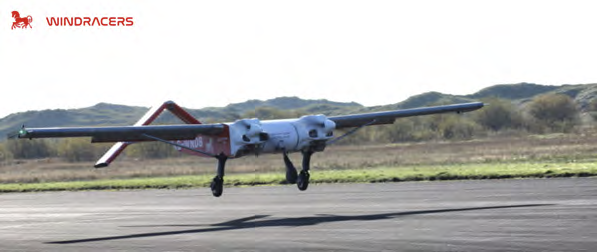
The launch of the ULTRA MK2 comes as governments, regulators and logistics companies increasingly recognize the inevitable transition to autonomous flight. The UK Government recently announced a Regulatory Innovation Office to speed up access to new technologies including cargo drones.
“The launch of ULTRA MK2 is proof that Windracers has moved rapidly from an idea to a commercial organization that is meeting the needs of customers today,” said Founder and Group Executive Chairman, Stephen Wright. “I am so proud of the Windracers team who have performed phenomenally to bring ULTRA MK2 to market in a very short time period and for ULTRA development over the last eight years. I know the team shares my excitement as we see the operational impact of ULTRA MK2 for our customers to help people around the world.”
“From eliminating the need for a pilot to developing a multi-mission platform that is dependable and easy to use and maintain, our ultimate goal is to bring down the cost for the end user,” said Simon Thompson, Group CEO of Windracers. “In ULTRA MK2, we have halved our operational fuel cost per kilogram and we will find even more efficiency in the future for our customers.”
Rune Storvold, SVP of Observational Systems for NORCE, detailed how ULTRA MK2 will carry two types of radar systems to detect changes to the Antarctic climate. Benoit Gaborit, Head of Mission for Aviation Sans Frontières, spoke of how ULTRA MK2 will, for the first time, integrate a heavy-lift, long-distance drone into the humanitarian aid supply chain to establish a service that can work in rapidly changing conditions.



